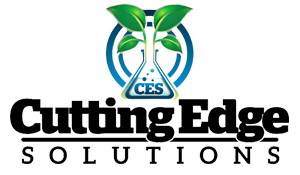The Art of Cloning
Cloning Basics
Gardeners typically choose a parent plant with the best characteristics of the species for cloning. These qualities often include the most disease resistant, the healthiest and the most productive. Individuals may reproduce more than one new growth from a parent plant, but cuttings should not exceed 20 to 30 percent of the mother plant volume.
Before beginning the cloning process, have all of the necessary equipment cleaned, sterilized and readily available for the plant cuttings. Soap, water and a weak bleach solution adequately eliminate microorganisms that may linger from plants previously occupying the tray. Gardeners generally also always use fresh growing medium when cloning or starting plants from seeds. Sterilize the razor blade or scissors with rubbing alcohol before cutting the parent plant.
Pour a small amount of growth hormone gel or solution into a thimble sized cap or other container. Never dip the plant directly into the bottle, as this action contaminates the solution. Cut the desired number of stems from the parent plant and trim the cut edges to a 45 degree angle. Some plant specialists recommend scraping the stem on the bottom and slightly up the sides, which stimulates cell reproduction and root growth. Make sure there are at least a couple of leaves on each stem for photosynthesis. Dip each stem into root hormone solution or gel, exposing not only the bottom of the stem, but also one inch up the stem sides.
Place each stem into the growing medium of choice. Wet the peat pot, propagation block or vermiculite combination with the diluted nutrient solution, which should also contain about four drops of Rootzone accelerant and another five drops of Superthrive. Allow the medium to drain thoroughly before covering the tray with the transparent dome. For adequate and healthy root growth, gardeners use heating pads underneath the tray and fluorescent light above the tray (16 to 18 hours daily) to maintain temperatures between 68 and 82 degrees Fahrenheit (20 to 28 degrees Celsius). A small thermometer placed inside the tray provides the internal temperature at a glance.
The dome of the growth tray should remain closed for the first three days. After this time, any vent holes may be opened. Lightly mist the plants with solution once in the morning and once in the evening. Watch for blackening of leaf edges or black spots appearing on leaves, which signify unhealthy fungal growth because of too much moisture. Remove the lid after another five days. After about two weeks from the time of planting, roots should appear in the medium. Healthy roots appear thick, white and hairy. Sickly roots appear thin and discolored.
























 © 2017
© 2017
hydrojon, January 26, 2012 11:30 pm - Tips, Tricks and Pitfalls of Cloning
Cloning is definitely the way to go, Saves so much time, why start from seeds when you can get a head start by cloning your already strong and healthy mother plant.